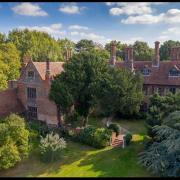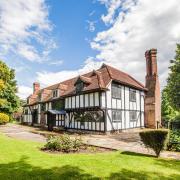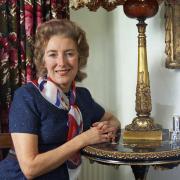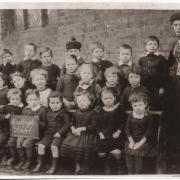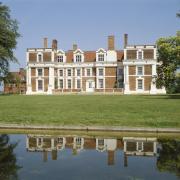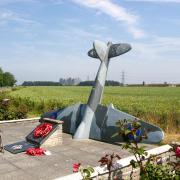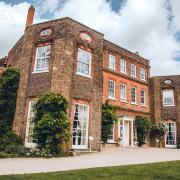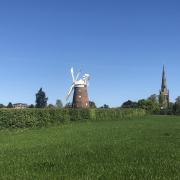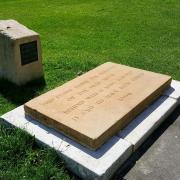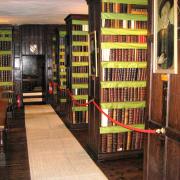Sybilla Hart delves into the history of Queen Elizabeth’s Hunting Lodge, which is nestled in the majestic Epping Forest
The Grade II* listed Queen Elizabeth’s Hunting Lodge, located in Epping Forest, was known historically as Great Standing. Today, it is a scheduled ancient monument. This timber-framed and plaster building is one of a kind because it was constructed on three levels; this was unusual in the medieval era as it would have taken significantly more labour to build. However, this lodge was not built as a domestic residence but as a hunting lodge, and in order to afford good views it was necessary to build high. King Henry VIII commissioned the building in 1543, and it was later renovated for his daughter, Queen Elizabeth I, in 1589. Legend has it that when Elizabeth received the news of the defeat of the Spanish Armada in 1588 whilst staying at Great Standing, she celebrated by riding her horse up the oak stairs!

Whilst we do not know for sure that Queen Elizabeth ever actually visited Grand Standing, we do know that she ordered significant repairs a year after the defeat of the Spanish Armada. The lodge would have been made available for important guests, such as royalty. As Queen Elizabeth I is said to have enjoyed hunting on horseback well into her late 60s, the idea that she tried her hand at hunting deer from the top floor of the lodge doesn’t sound entirely implausible.

On the website Londontopia, Laura Porter suggests that ‘From the upper floors, The Queen could shoot at the deer as they were driven towards her by the hunting party.’ From the top of the building, where there were no windows (these were only on the ground floor), it was possible to get a good view of the deer chase at Chingford below. Henry made sure that his deer park was ring fenced so no other animal except the deer could roam and destroy the view. The City of London corporation who manage the lodge today describe the view as ‘one of the best views of Epping Forest.’

As Laura Porter says, ‘While this isn’t a Tudor palace, like Hampton Court Palace in west London or the long-gone Palace of Placentia in Greenwich, it is a remarkable and rare survival of an intact timber-framed hunt standing still surrounded by its mediaeval royal hunting forest.’ Great Standing was constructed from massive oak timbers that showed engravings made by the royal craftsmen. The floors were built at a slant so that the rain would run off the building and colourful banners (these are still recreated at the museum) hang out of the windows. Today, the lodge has been painted white, including its oak timbers, a practice that has been bemoaned by some who wish for the original beams to still be visible – I think I’m on their side!
Epping Forest, some 6,000 acres in total, was established in the 17th century. Prior to that, it was known as Waltham Forest and was first decreed a hunting forest in the 12th century by Henry II. Henry VIII held many manorial lands around Chingford and had the use of a smaller hunting lodge in Loughton called Little Standing. As Instagram account Visit the City of London points out, ‘The Tudors loved hunting and Henry VIII was no exception.’ Such was his fondness for this neck of the woods that nearby Waltham Abbey was the last abbey to be dissolved. Waltham Forest provided the setting for many of King Henry VIII and his second wife Anne Boleyn’s early courtship. They would ride together in the forest. As Visit the City of London explains, ‘Epping Forest also marked its (their relationship’s) epilogue. On 19th May 1536, Henry VIII was there hunting while his wife, Queen Anne Boleyn, was being executed in the Tower of London.’

This regal love of hunting continued well into the 17th century. James I was a fan and he even bred a certain type of dark fallow deer that can still be seen in the forest to this day. Great Standing was subsequently used as a manorial court until the late 19th century. This was a local court that dealt with aspects relating to the land such as waterways and roads.
Two-thirds of Epping Forest is classed as a Site of Specific Scientific Interest and a Special Area of Conservation. In 1878, the Epping Forest Act meant it was formally protected from being built on and ransacked for wood by locals who were taking advantage of their ancient lopping rights. The Epping Forest Act also saw the end of the royal ownership of the forest when it was bought by the City of London Corporation for the enjoyment of the people. When Queen Victoria visited four years later, she described it as ‘beautiful’ and subsequently Epping Forest, also known as The People’s Forest, became hugely popular with day-trippers. It is the largest public open space in the London area and enjoys a reputation for intrigue and danger. Dick Turpin, the legendary highwayman, is said to have lived in a cave at Waltham Forest where he and his gang indulged in illegal deer poaching.

Today, Queen Elizabeth’s Hunting Lodge is a museum managed by the City of London, located at 6 Ranger’s Road, E4 7QH. Unfortunately, it is not open as normal because of the pandemic, but it is possible to book a private tour at a cost of £5 per person for groups of six. In normal times, it was possible to sample Tudor cuisine and try on Tudor dress, which will hopefully be on offer again in the future. Call 020 7332 1911 to book.
You may also be interested in Waltham Abbey: https://www.greatbritishlife.co.uk/lifestyle/heritage/history-of-waltham-abbey-essex-8870194







